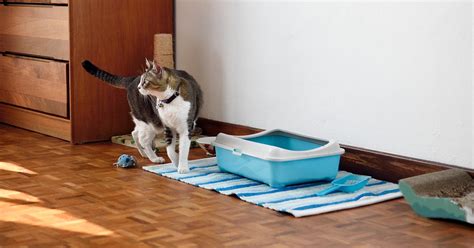Introduction

Owning a cat is a delightful experience, but managing their litter box can be a daunting task for even the most seasoned pet owner. This comprehensive guide delves into the world of cat litter, providing essential education and resources to help you optimize your cat’s litter box experience and maintain a healthy and hygienic environment for both you and your feline companion.
Types of Cat Litter
#1. Clay Litter
* Most common and affordable option
* Comes in clumping or non-clumping varieties
#2. Silica Gel Litter
* Highly absorbent and dust-free
* Expensive but long-lasting
#3. Pine Pellets
* All-natural and biodegradable
* Some cats may not like the texture
#4. Wheat Litter
* Flushable and biodegradable
* Can be more expensive than other options
#5. Crystal Litter
* Extremely absorbent and odor-controlling
* Some cats may find it abrasive
Choosing the Right Litter
Factors to Consider:
- Your cat’s preferences: Some cats have strong opinions about litter texture.
- Odor control: Look for litter that absorbs and masks odors effectively.
- Clumping ability: Clumping litter makes it easier to scoop and remove solid waste.
- Budget: Litter prices vary depending on type and brand.
Litter Box Management
#1. Location: Place the litter box in a quiet, private area where your cat feels comfortable.
#2. Number of Boxes: Provide one litter box for each cat, plus one extra.
#3. Cleaning Frequency: Scoop solid waste daily and change the entire litter every 1-2 weeks.
#4. Hygiene: Wash the litter box with hot, soapy water occasionally to prevent odor buildup.
Common Mistakes to Avoid
- Using too little litter: The litter should be deep enough for your cat to dig and bury.
- Not cleaning the box often enough: A dirty litter box can deter your cat from using it.
- Choosing the wrong litter: Experiment with different types to find one that your cat prefers.
- Ignoring your cat’s litter box habits: Changes in litter box behavior can indicate health problems.
- Punishing your cat for litter box accidents: This will only make the problem worse.
FAQs
#1. Why does my cat avoid the litter box?
Possible reasons include a dirty litter box, a medical condition, or stress.
#2. How can I get my cat to use the litter box?
Start by placing the cat in the box after meals or naps. Gradually move the box to its permanent location.
#3. Is it okay to flush cat litter?
Only certain types of flushable litter are safe to dispose of in the toilet. Always check the packaging.
#4. What should I do if my cat has a litter box accident?
Clean up the mess without punishment and consider consulting a veterinarian if the behavior persists.
Conclusion
Navigating the world of cat litter can be a challenge, but by understanding your cat’s needs, choosing the right litter, and practicing proper litter box management, you can create a positive and hygienic experience for both you and your feline friend. Remember, a well-maintained litter box is essential for a healthy and happy cat.





















